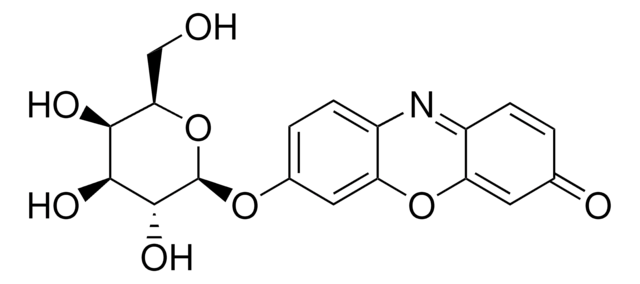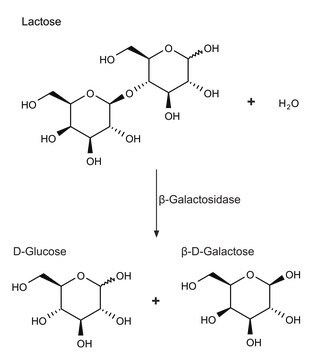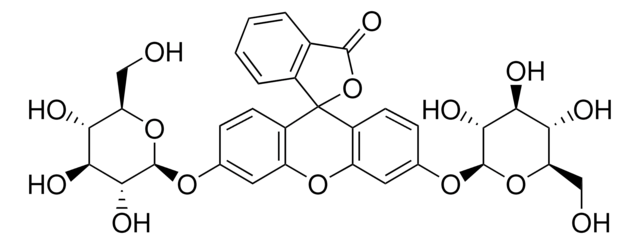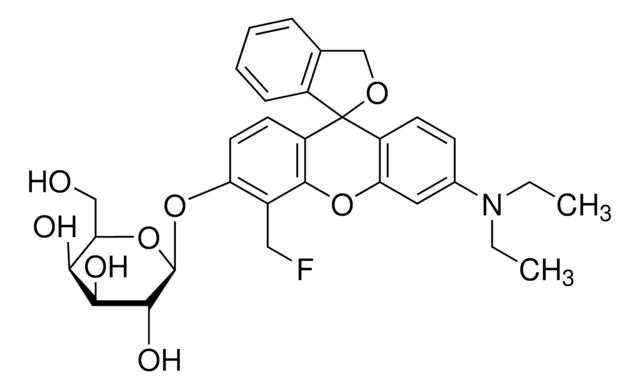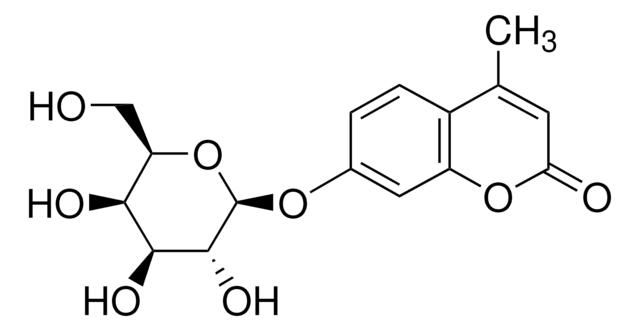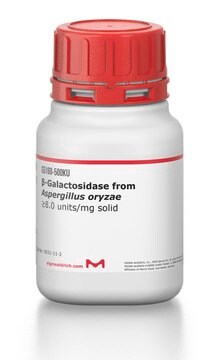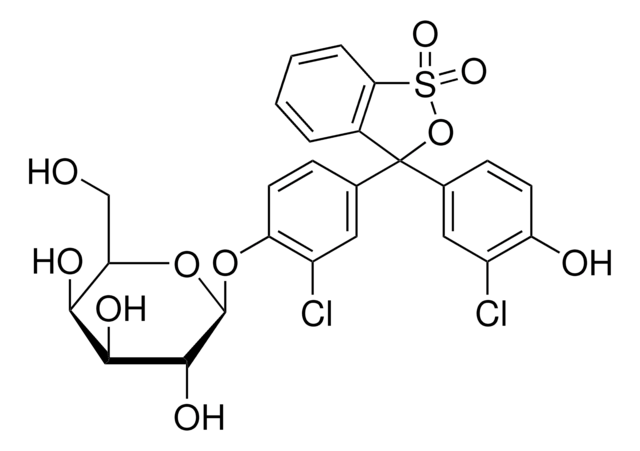Key Documents
F2756
Fluorescein di(β-D-galactopyranoside)
Synonim(y):
FDG
About This Item
Polecane produkty
Próba
≥98% (HPLC)
Postać
powder
rozpuszczalność
methanol: 20 mg/mL, clear, yellow
temp. przechowywania
−20°C
ciąg SMILES
OC[C@H]1O[C@@H](Oc2ccc3c(Oc4cc(O[C@@H]5O[C@H](CO)[C@H](O)[C@H](O)[C@H]5O)ccc4C36OC(=O)c7ccccc67)c2)[C@H](O)[C@@H](O)[C@H]1O
InChI
1S/C32H32O15/c33-11-21-23(35)25(37)27(39)30(45-21)42-13-5-7-17-19(9-13)44-20-10-14(43-31-28(40)26(38)24(36)22(12-34)46-31)6-8-18(20)32(17)16-4-2-1-3-15(16)29(41)47-32/h1-10,21-28,30-31,33-40H,11-12H2/t21-,22-,23+,24+,25+,26+,27-,28-,30-,31-/m1/s1
Klucz InChI
ZTOBILYWTYHOJB-WBCGDKOGSA-N
Szukasz podobnych produktów? Odwiedź Przewodnik dotyczący porównywania produktów
Zastosowanie
Działania biochem./fizjol.
Substraty
produkt powiązany
Kod klasy składowania
11 - Combustible Solids
Klasa zagrożenia wodnego (WGK)
WGK 3
Temperatura zapłonu (°F)
Not applicable
Temperatura zapłonu (°C)
Not applicable
Środki ochrony indywidualnej
Eyeshields, Gloves, type N95 (US)
Certyfikaty analizy (CoA)
Poszukaj Certyfikaty analizy (CoA), wpisując numer partii/serii produktów. Numery serii i partii można znaleźć na etykiecie produktu po słowach „seria” lub „partia”.
Masz już ten produkt?
Dokumenty związane z niedawno zakupionymi produktami zostały zamieszczone w Bibliotece dokumentów.
Klienci oglądali również te produkty
Nasz zespół naukowców ma doświadczenie we wszystkich obszarach badań, w tym w naukach przyrodniczych, materiałoznawstwie, syntezie chemicznej, chromatografii, analityce i wielu innych dziedzinach.
Skontaktuj się z zespołem ds. pomocy technicznej